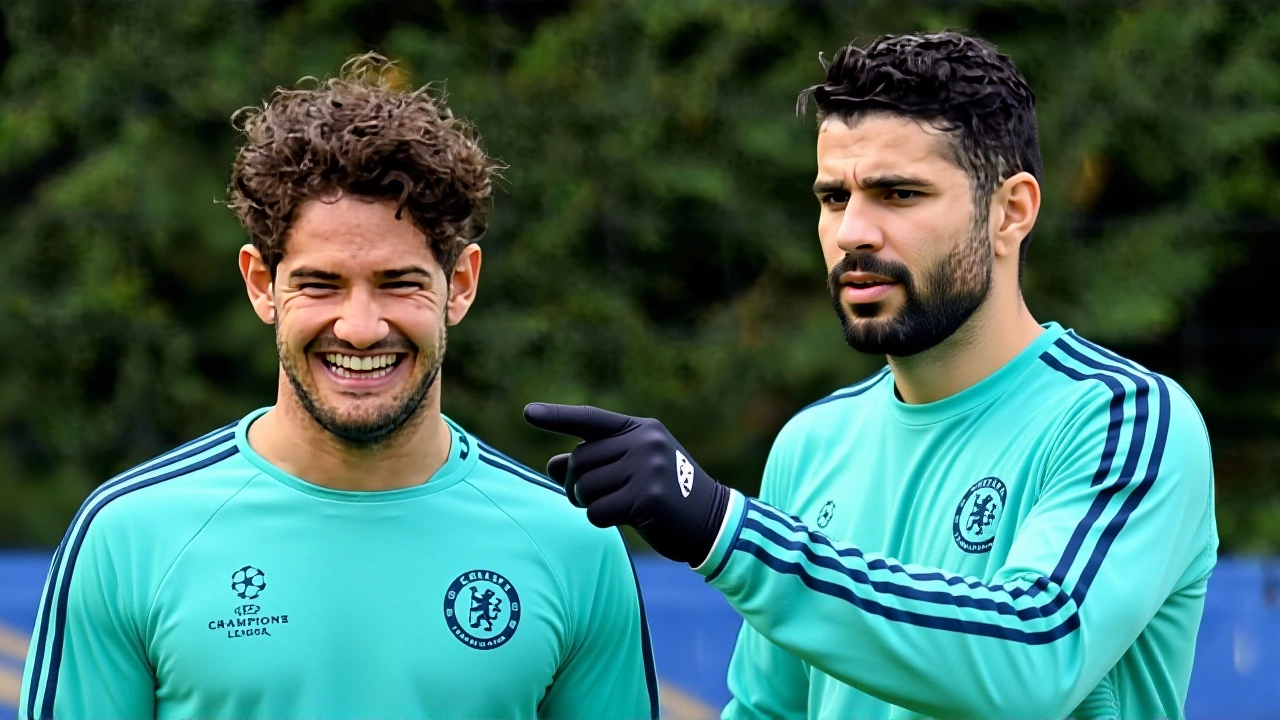When Alexandre Pato, a 34‑year‑old Brazilian striker, opened up about his former Chelsea teammate, Diego Costa, the story instantly caught the eye of fans across the Premier League.
The scoop landed in the Daily Mail on March 20, 2023, right in the middle of the 2022‑23 season, and it centered on a surprisingly hilarious way Costa dealt with on‑field abuse during their brief overlap in the 2015‑2016 campaign at Chelsea Football Club. The two shared the locker room from 15 January to 15 May 2016, a period that coincided with the club’s fight to stay clear of the relegation zone at Stamford Bridge in London.
Background of the two Brazilians
Pato burst onto the scene with AC Milan in 2007, netting 56 goals in 125 appearances – a strike‑rate that made him one of Europe’s most coveted forwards between 2007 and 2011. He also earned 27 caps for the Brazil national team, scoring ten times before injuries began to take their toll.
Diego Costa, born in Lagarto, Brazil, switched allegiance to Spain in 2014 after a prolific spell at Atlético Madrid. He joined Chelsea on a four‑year deal on 21 July 2014 and quickly earned a reputation for physical play and fiery confrontations – think yellow card against Maccabi Tel Aviv in September 2015 and a red card at Everton in November 2015.
What the Daily Mail reported
The article – penned by an unnamed sports journalist – quoted the headline: “Alexandre Pato has opened up on how his former Chelsea team‑mate Diego Costa used to deal with abuse.” While the piece didn’t spell out the exact routine, it stressed that Costa’s method was “hilarious,” implying a non‑violent, perhaps comedic, response to provocation.
According to the report, Pato said he often saw Costa diffuse tension by making light‑hearted gestures or witty remarks aimed at the offending opponent or spectator. “He’d just laugh it off, make a joke, and keep playing,” Pato allegedly recounted, though the exact wording remains undocumented beyond the Daily Mail’s paraphrase.
Costa’s reputation for controversy
For years, Costa’s name has been linked with on‑pitch altercations. His 2015 red card at Everton sparked a media frenzy, and a 2016 incident with a referee earned him a three‑match ban. Yet, the claim that he could turn a hostile chant into a punch‑line adds a new layer to his persona.
Sports psychologists note that humor can serve as a coping mechanism in high‑pressure environments. If Costa indeed employed this tactic, it might explain why the striker was able to bounce back after a series of suspensions and still finish the 2015‑16 season with eight goals for Chelsea.
Why the revelation matters
Fans, pundits, and fellow players are all asking the same question: does a hilarious response actually curb abuse, or does it simply mask deeper issues? The answer could influence how clubs address player welfare.
- Abuse in football remains a persistent problem, with reports of racist chants still surfacing across the Premier League.
- Traditional responses – reporting to referees or leaving the pitch – often don’t stop the behaviour.
- Humor, when used wisely, can defuse tension without escalating the situation.
- If Costa’s approach proved effective, clubs might consider workshops on constructive humor for players.
Moreover, the timing of the disclosure – amid a renewed debate on fan conduct following the 2022‑23 season’s spate of incidents – gives it added relevance.

Looking ahead – could the tactic spread?
While no official club statement has been made, the narrative is already circulating on social media. Some former teammates have hinted they might adopt a similar style, especially younger players who grew up watching veterans handle pressure with a grin.
Coaches like Mauricio Pochettino have long advocated for mental‑strength training. Adding a humor component could become part of the curriculum, especially as the Premier League looks to improve its image internationally.
For now, the exact details of Costa’s “hilarious” method remain a mystery. But the fact that Pato felt comfortable sharing it suggests a shift in locker‑room culture – one where candid conversation about coping strategies is becoming more accepted.
Key Facts
- Who: Alexandre Pato (Brazilian striker, 34) and Diego Costa (Brazilian‑Spanish striker, 27 during 2015‑16).
- Where: Chelsea FC, Stamford Bridge, London.
- When: Pato’s loan spell – 15 Jan to 15 May 2016; story published 20 Mar 2023.
- What: Costa allegedly used humor to counter on‑field abuse.
- Why it matters: Highlights alternative coping methods for player welfare amid ongoing abuse debates.
Frequently Asked Questions
How might Costa’s humor tactic affect other players?
If Costa’s approach proved effective, younger players could adopt humor as a low‑risk way to diffuse tension. Clubs may incorporate short workshops on comedic timing and de‑escalation, allowing athletes to handle provocation without resorting to aggression or withdrawal.
What incidents prompted the discussion of abuse?
Diego Costa’s own record includes a yellow card for dissent in a Champions League match against Maccabi Tel Aviv (15 Sep 2015) and a red card at Everton (8 Nov 2015). Those high‑profile moments kept the abuse narrative in the spotlight, making Pato’s revelation timely.
Why did Pato choose to speak about this now?
The Daily Mail approached Pato during a retrospective interview series on former Chelsea players. With the Premier League’s renewed focus on fan conduct, Pato likely saw an opportunity to share a lighter‑hearted anecdote that also contributes to the broader conversation on player wellbeing.
Has Chelsea officially responded?
As of the article’s publication, Chelsea Football Club has not issued a comment. The club historically prefers to let former players’ stories speak for themselves unless they directly impact current policy.
Could this story influence future league policies?
Potentially. The Premier League’s disciplinary committees regularly review best‑practice recommendations. A widely‑cited, player‑driven coping method could prompt a review of existing protocols, encouraging clubs to offer mental‑strength training that includes humor as a tool.

